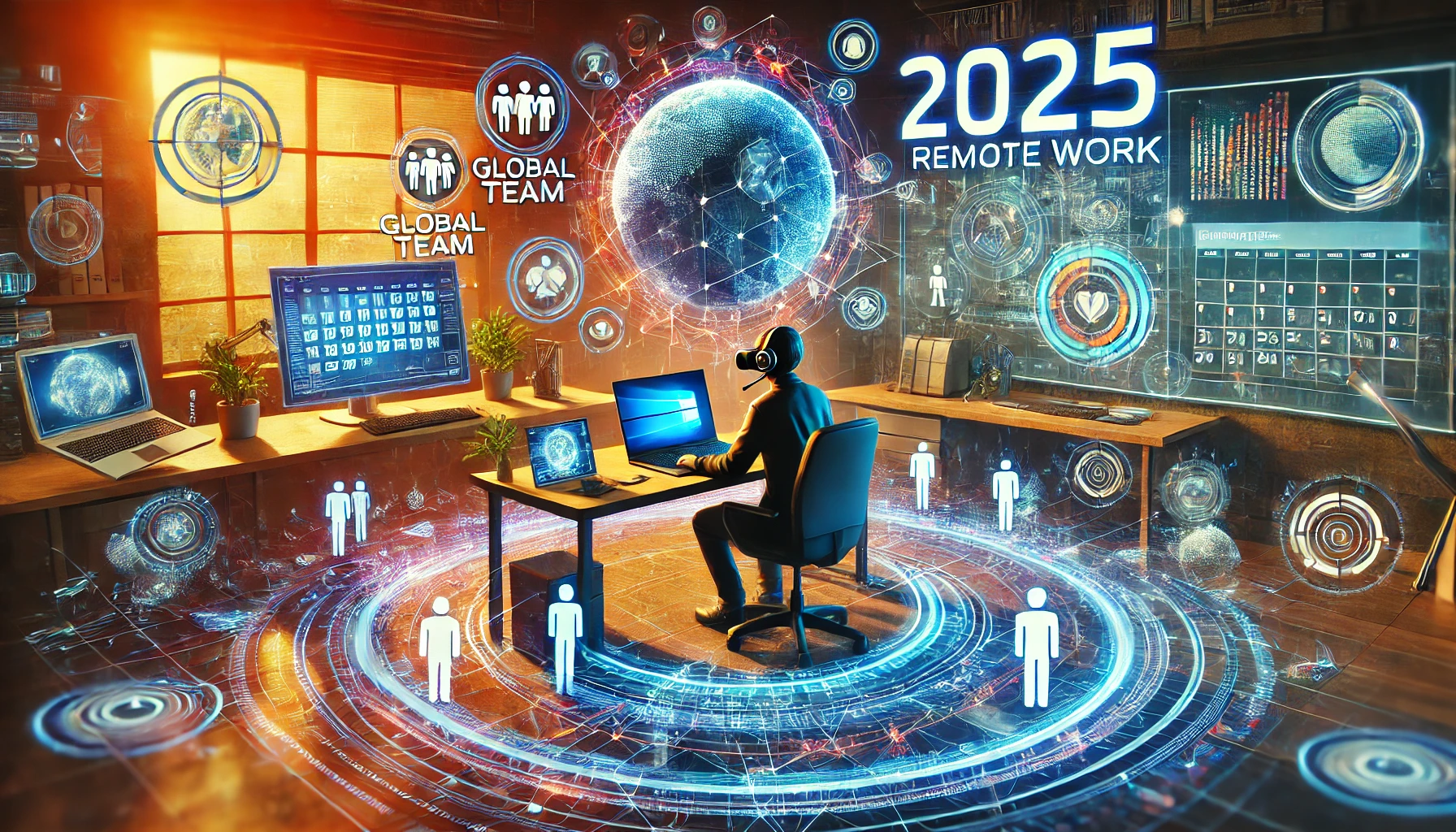The Future of Remote Work: 7 Trends That Will Shape 2025 and Beyond. Remote work has come a long way in the past decade, evolving from a niche arrangement to a cornerstone of modern business operations. As we look to 2025 and beyond, remote work continues to transform how we work, collaborate, and connect. Here are seven key trends that will define the future of remote work.
1. Hybrid Work Models
The future of work is hybrid. Companies are increasingly adopting flexible arrangements that blend in-office and remote work. This model allows employees to enjoy the benefits of both environments while enabling businesses to maintain culture and collaboration. Expect more sophisticated scheduling tools and policies to optimize hybrid workflows.
2. Virtual Offices Powered by VR and AR
Imagine attending meetings in a fully immersive virtual space, complete with customizable avatars and realistic environments. Virtual reality (VR) and augmented reality (AR) technologies are set to revolutionize remote collaboration by making virtual offices feel as interactive and engaging as physical ones.
3. Focus on Employee Well-being
Burnout remains a critical concern for remote workers. Companies are prioritizing employee well-being with flexible hours, wellness programs, and mental health support. Tools like digital mindfulness apps and “focus time” scheduling features are becoming staples of remote work culture.
4. Advanced Remote Work Technology
Artificial intelligence (AI) and machine learning (ML) are enhancing productivity tools, from smarter virtual assistants to real-time language translation in video calls. These advancements ensure smoother collaboration, particularly for global teams.
5. Global Talent Expansion
Geography is no longer a barrier to hiring. By 2025, businesses will increasingly tap into global talent pools, leveraging tools to manage distributed teams effectively. Platforms for seamless onboarding, payroll, and compliance will play a vital role in this trend.
6. Enhanced Cybersecurity Measures
With remote work comes increased exposure to cyber threats. By 2025, organizations will invest heavily in zero-trust security models, multi-factor authentication, and endpoint protection to safeguard sensitive data and maintain trust among employees and clients. 10 Must-Know Cybersecurity Tips to Protect Your Digital Life in 2025.
7. Sustainability Through Remote Work
Remote work is inherently more sustainable, reducing commuting emissions and promoting paperless operations. As companies align with environmental goals, remote work will continue to play a significant role in achieving sustainability targets.
What These Trends Mean for You
For professionals, adapting to these trends means staying ahead of the curve by embracing new tools, honing digital collaboration skills, and maintaining work-life balance. For businesses, it’s about creating strategies that attract top talent, foster innovation, and remain resilient in a fast-changing landscape.
Conclusion – The Future of Remote Work 2025 and Beyond
The future of remote work isn’t just about where we work – it’s about how we work better. These trends highlight the exciting possibilities of a more connected, inclusive, and sustainable workforce. Whether you’re an employee or an employer, now is the time to prepare for the future of work in 2025 and beyond.





Leave a Reply